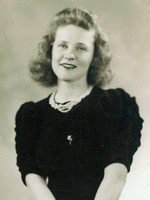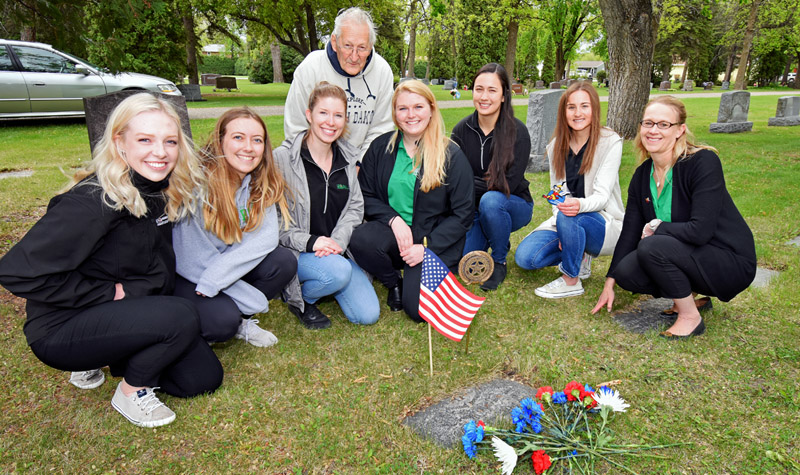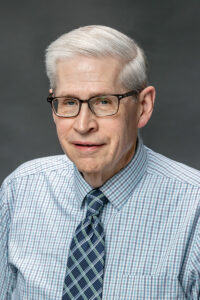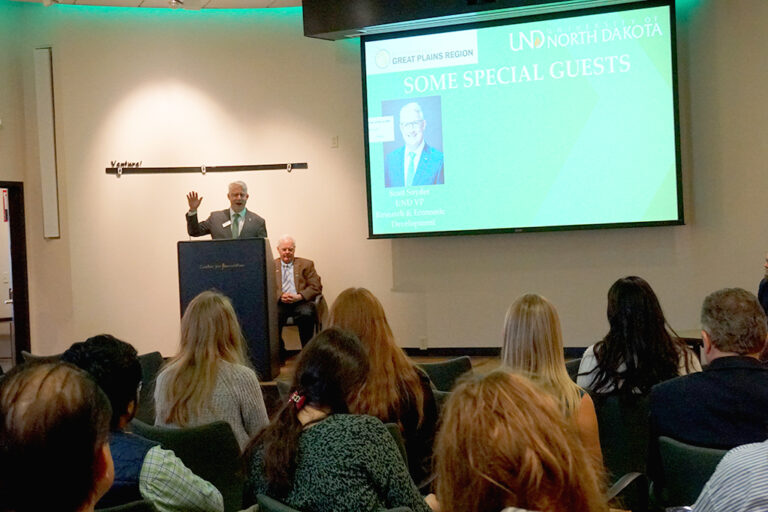Remembering UND’s woman aviation pioneer
University’s first woman pilot gave her life for her country in World War II

As World War II raged on, a young woman took off from Avenger Airfield in Texas for a solo flight in a military training aircraft. She never returned.
On Aug. 3, 1943, 23-year-old Grand Forks, N.D., native and University of North Dakota graduate Kathryn “Kay” Lawrence became one of 38 pilots in the Women Airforce Service Pilots (WASP) program to lose their lives. She was less than a month into her training at the airfield near Sweetwater, Texas, when the tragic accident occurred.
Lawrence’s single-engine PT-19 airplane apparently went into a deadly spin. She attempted to bail out, but was unable to pull the ripcord to open her parachute, perhaps blacking out because of high g-forces. Her body was found not far from the wrecked aircraft.

As Memorial Day nears, Lawrence is not only being remembered for her service and sacrifice, but also as the first woman to earn her pilot’s license from UND’s College of Engineering & Mines through the Civil Aeronautics Authority. She graduated with a degree in education in 1942, then went to Seattle to work for the Boeing Aircraft Co. before becoming a WASP.
While many of the women pilots in the program cited patriotism and a desire to serve their country during the war, Kay’s nephew Mike Lawrence – a former UND employee who still lives in Grand Forks – remembers the family story about her reason for becoming a WASP.
“If you get to fly the most powerful, up-to-date airplanes for free, then what’s the question?” she is said to have replied when asked about taking a risk she didn’t need to take. Born in 1938, Mike doesn’t remember his aunt, although he knows she had a reputation for being unafraid to try new things. At UND, she belonged to a sorority, was active in athletics and was a cheerleader.
On Thursday, six members of UND’s Women in Aviation (WIA) chapter were joined by advisor Elizabeth Bjerke, associate dean and aviation professor at the John D. Odegard School of Aerospace Sciences, and Mike Lawrence to lay flowers and place a flag on Kay Lawrence’s grave. It’s part of a Memorial Day effort by Women in Aviation International to #HonorTheWASP.

Mike was overcome with emotion as he told stories about his Aunt Kay to the six women UND student pilots, some of whom are taking training to fly helicopters for the U.S. Army. He said his aunt never would have imagined so many women having aviation careers as pilots.
Bjerke, who has studied the WASP program, heard panel discussions in which WASP members participated and wrote a paper about the program as an undergraduate aviation student at UND, wants to keep Kay Lawrence’s memory alive. She became interested after a visitor to the National WASP World War II Museum in Sweetwater posted a photo on Facebook showing Kay’s memorial plaque.
“That sparked my interest and I went to the archives at the Chester Fritz Library in Special Collections,” Bjerke recalled. “We found that she was buried in Grand Forks and found her gravesite. We decided to name the Women in Aviation scholarship we’ve been giving out for decades in honor of Kay.”

The WASP program was formed in 1942 to help relieve the shortage of pilots needed to ferry military aircraft around the country and overseas. Originally composed of 28 civilian women volunteer pilots, more than a thousand women were trained for the program before World War II ended. They flew more than 60 million miles in 77 different types U.S. Army Air Corps aircraft. WASP members also served as flight instructors, teaching male pilots how to fly some of the most difficult-to-handle aircraft.
The end of young Kay Lawrence’s life is somewhat symbolic of how the WASP program ended. Never an official part of the military, it took more than three decades before WASP members were recognized as veterans and honored for their valuable contributions during the war.
“Many of these ladies served their country in World War II and, after the war was over, they went back to living their lives as mothers and grandmothers,” Bjerke explained. “It was like, ‘Alright. Thanks for doing that, but there’s no jobs for you in the aviation industry.’”
It wasn’t until 2006 that a military memorial ceremony was held at Lawrence’s gravesite in Grand Forks in Memorial Park Cemetery. It featured a U.S. Air Force honor guard and a flyover.
Mike Lawrence said that after his aunt died during the wartime training accident, the situation was far different. Because she wasn’t in the military, WASP members had to raise money to send Kay’s body back to Grand Forks. All they could afford was a plain wood casket.
“While they were loading the casket on to the train, one of the girls who was a pilot with Kay saw that they handled it roughly, just like a piece of baggage,” he said. “They had no respect. That young lady decided to come with Kay all the way back to Grand Forks to make sure they handled her with respect.”
Kay’s death wouldn’t be the only wartime loss for the Lawrence family. Her brother William joined the U.S. Marine Corps and was killed on Sept. 15, 1944, in combat on Palau Island.
Mike said William wrote a letter to a family member saying, “I have to go into combat again. Don’t tell Mom.”
It was the last letter they received from him. Kay’s mother, Chrissie, who lived to be 99, would never forget the family’s sacrifice.
Mike Lawrence shared a story about his grandmother with the UND Women in Aviation students who gathered to honor Kay for Memorial Day.
When his grandmother was in her 90s and visited Grand Forks, he drove her past the student union, which was being remodeled. A sign out front said the building was the “University Student Center.” He saw that this upset his grandmother, but he wasn’t sure why.
“About a week later, Grandma told me she had gone to talk with President (Tom) Clifford and told him he couldn’t name the building the Student Center,” Mike explained. “She said, ‘That is the Memorial Union. I lost two children in the war. They were students here, and that building was built as a memorial building.’
“The next week, I saw a new sign out there saying it was the Memorial Union. If it wouldn’t have been for my grandma, it would have been called the Student Center,” he noted.
Bjerke wants to see the tradition continued by including space in the new Memorial Union to honor Kay Lawrence and other UND students who’ve made the ultimate sacrifice in service to the country.



